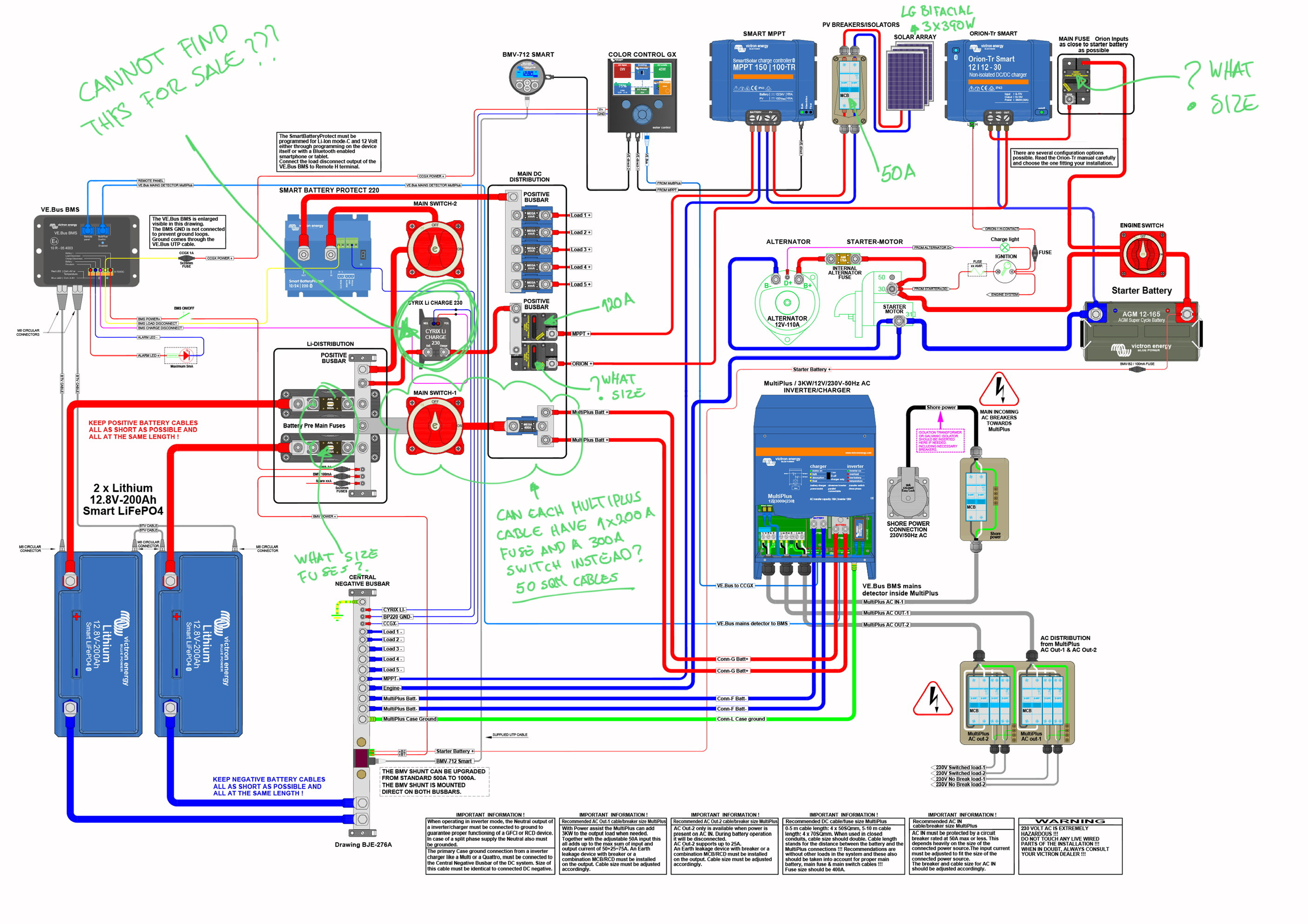I’m trying to finalise the brainstorming and diagram to convert our sailing yacht from lead acid to LiFePo4, I‘ve used one of Victron schematics to help me visualise the system and understand how things are connected before embarking on this journey but I need some assistance and all the so called marine electricians we’ve found so far are hopeless and don’t even seem to be aware of the standards for connecting batteries (I tested them with a few questions and their answers are literally text book Victron wiring unlimited the what not to do section). So I need help.
Existing system and equipments:
- 12v
- Multiplus 12/3000/230 50hz 16A
- MPPT 150/100 - TR
- Colour control
- BMV 712
- "dumb"110A alternator
- Battery isolator
- 3x390watts LG bifacial solar panels
- engine start battery Victron AGM 12-165
Questions:
- Does the Orion DC to DC protect my "dumb" alternator from overcharge/burnout by the LiFePo4 demands? Thinking on limiting the charge to 30A / 1Orion unit but possibly add a second unit later. The main source of power will be the solar system.
- currently the Multiplus is connected with 2x50sqm cables of same length and under 5m, each cable with a 200A fuse and a 300A switch (one of those big red ones on the diagram below). Is this ok or we should really wire it like in this diagram with one 400A fuse then a switch and then the 2 cables?
- cannot find the Cyrix Li Charge 230 for sale anywhere. As this product been discontinued? What’s the alternative?
- what size fuses are recommended for the locations I’ve marked?
- Can we use the Victron super packs or is it better the Victron lithium smart? We do run some high loads so I’m worried about the limitations of 70A maximum discharge current and maximum charge current of the super packs. Our solar system can deliver up to 98A. (I’m assuming that if I have 2 batteries with a 70A maximum discharge current each it means I actually have a total of around 140A maximum discharge current on my bank, please correct if I’m wrong its quite important)
Thanks

